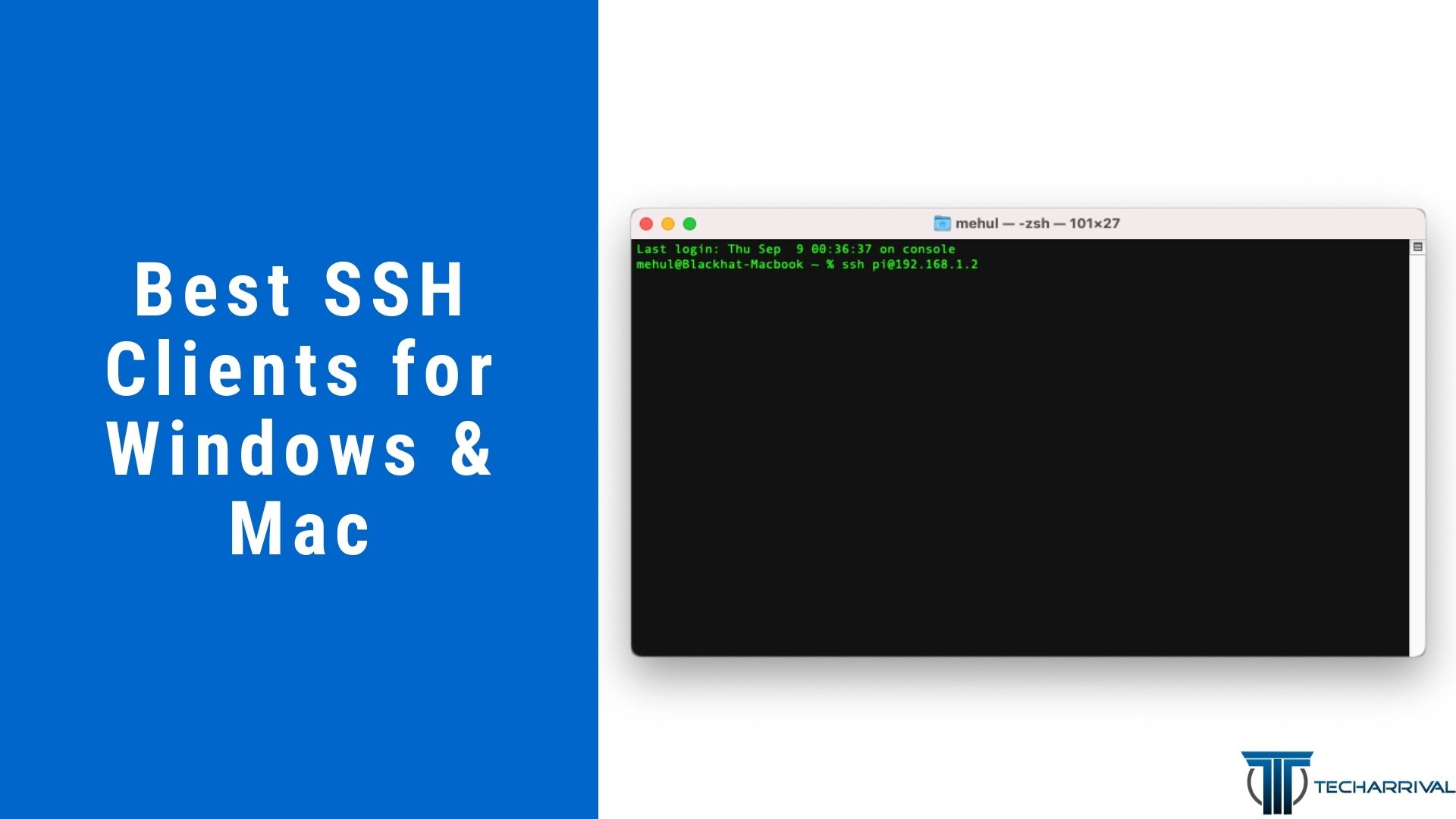Hey there, tech enthusiasts! If you’re diving into the world of secure remote connections, then you’re in the right place. Best SSH RemoteIoT is what we’re talking about today, and trust me, this is going to be a game-changer for how you manage your IoT devices. Whether you’re a beginner or a seasoned pro, this guide will walk you through everything you need to know about SSH RemoteIoT and why it’s so important in today’s tech landscape. So, buckle up and let’s get started!
SSH RemoteIoT is not just some buzzword; it’s a practical solution that’s becoming increasingly essential as more devices connect to the internet. With cyber threats on the rise, having a secure way to remotely access and control your IoT devices is no longer optional—it’s a necessity. This guide will break down the basics, show you the best practices, and give you the tools you need to make the most out of SSH RemoteIoT.
Now, before we dive deep into the nitty-gritty, let me ask you a question: how secure are your IoT devices right now? If you’re like most people, the answer might not be as reassuring as you’d like. That’s where SSH RemoteIoT comes in. It’s like a digital shield that keeps your devices safe while giving you the flexibility to manage them from anywhere. Let’s explore why this matters and how you can implement it effectively.
Read also:Vega Thompson Leaks The Inside Scoop You Need To Know
What is SSH RemoteIoT?
First things first, let’s clear the air about what SSH RemoteIoT actually is. SSH stands for Secure Shell, and it’s a protocol that allows you to securely connect to remote devices over an unsecured network. When we talk about RemoteIoT, we’re referring to using SSH specifically for Internet of Things (IoT) devices. This means you can control everything from smart home gadgets to industrial sensors without worrying about hackers or unauthorized access.
Think of SSH RemoteIoT as a virtual tunnel that encrypts all your data traffic between your device and the IoT device you’re connecting to. It’s not just about convenience—it’s about security. With SSH, you can rest assured that your sensitive information is protected, even when you’re accessing it from a public Wi-Fi hotspot.
Why SSH Matters in IoT?
Here’s the deal: IoT devices are everywhere, and they’re only going to become more prevalent. From smart fridges to autonomous vehicles, these devices are transforming industries and daily life. But with great power comes great responsibility. Without proper security measures, IoT devices can become easy targets for cybercriminals. That’s where SSH steps in.
- SSH provides end-to-end encryption, ensuring that your data remains private.
- It uses strong authentication methods, like public-key cryptography, to verify the identity of both the client and the server.
- SSH allows for secure file transfers, command execution, and even port forwarding, making it a versatile tool for managing IoT devices.
In short, SSH RemoteIoT isn’t just a nice-to-have feature—it’s a must-have for anyone serious about IoT security.
Top Benefits of Using Best SSH RemoteIoT
Now that we’ve established what SSH RemoteIoT is, let’s talk about why it’s worth your time and effort. Here are some of the top benefits you can expect:
Enhanced Security
Security is the name of the game when it comes to IoT. With SSH RemoteIoT, you can significantly reduce the risk of unauthorized access and data breaches. The encryption and authentication features of SSH make it nearly impossible for hackers to intercept your communications or impersonate your devices.
Read also:Necati Arabac305 A Rising Star In The Turkish Music Scene
Remote Access Made Easy
Gone are the days when you had to physically be near your IoT devices to manage them. SSH RemoteIoT lets you access and control your devices from anywhere in the world, as long as you have an internet connection. This flexibility is invaluable, especially for businesses that rely on IoT for their operations.
Cost-Effective Solution
Implementing SSH RemoteIoT doesn’t have to break the bank. In fact, it can save you money in the long run by reducing the need for on-site maintenance and minimizing the risk of costly security breaches. Plus, most SSH clients and servers are open-source, meaning you can use them without paying a dime.
How Does SSH RemoteIoT Work?
Let’s take a closer look at the technical side of things. When you use SSH RemoteIoT, here’s what happens behind the scenes:
- You initiate a connection request from your client device to the IoT device you want to access.
- The SSH server on the IoT device verifies your identity using public-key cryptography or password authentication.
- Once authenticated, a secure tunnel is established between your device and the IoT device.
- You can now execute commands, transfer files, or perform other actions as if you were physically connected to the device.
It’s a straightforward process, but the security it provides is anything but simple. The combination of encryption, authentication, and secure communication makes SSH RemoteIoT a rock-solid solution for IoT management.
Choosing the Best SSH RemoteIoT Solution
With so many options available, how do you choose the best SSH RemoteIoT solution for your needs? Here are a few factors to consider:
1. Compatibility
Make sure the SSH client and server you choose are compatible with your IoT devices. Some devices may have specific requirements or limitations, so it’s important to do your research beforehand.
2. Security Features
Not all SSH implementations are created equal. Look for solutions that offer robust security features, such as two-factor authentication, key rotation, and regular updates to address vulnerabilities.
3. Ease of Use
You want a solution that’s easy to set up and use, even if you’re not a tech expert. Some SSH clients come with user-friendly interfaces and detailed documentation to help you get started quickly.
4. Scalability
If you’re managing a large number of IoT devices, you’ll need an SSH RemoteIoT solution that can scale with your needs. Look for options that support multiple connections and can handle high traffic without compromising performance.
Best Practices for SSH RemoteIoT
Now that you know how SSH RemoteIoT works and what to look for in a solution, let’s talk about some best practices to ensure you’re using it effectively:
1. Use Strong Passwords
While public-key authentication is the preferred method, if you’re using password-based authentication, make sure your passwords are strong and unique. Avoid using common words or easily guessable patterns.
2. Regularly Update Your Software
Keep your SSH clients and servers up to date with the latest security patches and updates. This will help protect against known vulnerabilities and ensure you’re using the most secure version of the software.
3. Monitor Your Connections
Keep an eye on who’s accessing your IoT devices and when. Most SSH solutions offer logging and monitoring features that allow you to track activity and detect any suspicious behavior.
4. Limit Access
Only grant access to those who absolutely need it. Use role-based access control to ensure that each user has the appropriate level of permissions for their role.
Common Challenges in SSH RemoteIoT
Like any technology, SSH RemoteIoT isn’t without its challenges. Here are a few common issues you might encounter and how to overcome them:
1. Configuration Complexity
Setting up SSH for the first time can be intimidating, especially if you’re not familiar with networking concepts. To overcome this, take advantage of online tutorials and community forums where you can find step-by-step guides and troubleshooting tips.
2. Performance Issues
Depending on your network setup and the number of devices you’re managing, you might experience performance bottlenecks. To address this, consider optimizing your network infrastructure and using SSH compression to reduce bandwidth usage.
3. Security Threats
Even with SSH, there’s always a risk of security breaches. Stay vigilant by following the best practices mentioned earlier and regularly reviewing your security policies.
SSH RemoteIoT vs. Other Remote Access Solutions
How does SSH RemoteIoT stack up against other remote access solutions? Here’s a quick comparison:
- SSH: Offers strong security, is widely supported, and is free to use.
- VPN: Provides secure network access but can be more complex to set up and manage.
- Remote Desktop Protocol (RDP): Great for Windows-based systems but lacks the flexibility of SSH.
While each solution has its own strengths and weaknesses, SSH RemoteIoT stands out as a versatile and secure option for IoT management.
Real-World Applications of SSH RemoteIoT
Let’s look at some real-world examples of how SSH RemoteIoT is being used today:
1. Smart Home Automation
With SSH RemoteIoT, homeowners can remotely control their smart thermostats, security cameras, and lighting systems, ensuring maximum convenience and energy efficiency.
2. Industrial IoT
In manufacturing and industrial settings, SSH RemoteIoT allows engineers to monitor and adjust machinery settings from a central location, reducing downtime and improving productivity.
3. Healthcare
SSH RemoteIoT is also being used in healthcare to securely transmit patient data and manage medical devices, ensuring compliance with regulations like HIPAA.
Conclusion: Why Best SSH RemoteIoT is the Way to Go
So, there you have it—a comprehensive guide to Best SSH RemoteIoT. From enhancing security to simplifying remote access, SSH RemoteIoT offers a host of benefits that make it an indispensable tool for anyone working with IoT devices. By following the best practices outlined in this article and choosing the right solution for your needs, you can take full advantage of what SSH RemoteIoT has to offer.
Now, here’s where you come in. Did you find this guide helpful? Do you have any questions or tips to share about SSH RemoteIoT? Leave a comment below and let’s keep the conversation going. And don’t forget to share this article with your friends and colleagues who might benefit from it. Together, let’s make the IoT world a safer and more connected place!
Table of Contents
- What is SSH RemoteIoT?
- Why SSH Matters in IoT?
- Top Benefits of Using Best SSH RemoteIoT
- How Does SSH RemoteIoT Work?
- Choosing the Best SSH RemoteIoT Solution
- Best Practices for SSH RemoteIoT
- Common Challenges in SSH RemoteIoT
- SSH RemoteIoT vs. Other Remote Access Solutions
- Real-World Applications of SSH RemoteIoT
- Conclusion


